Travel in Spain: Barcelona | donQuijote

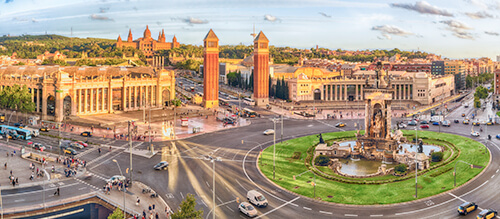


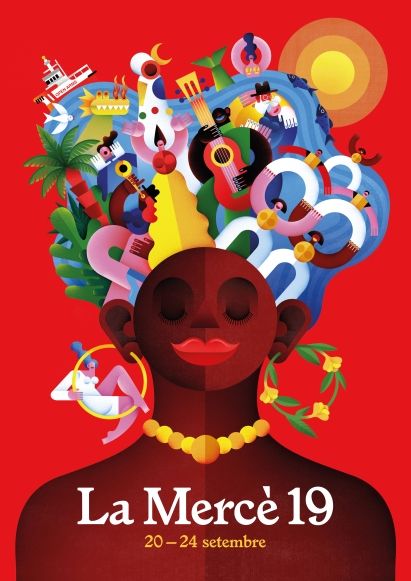
For many, September is a time to say goodbye to summer and head back to school or work. However, people in Barcelona have something spectacular that softens the blow of returning to the daily grind: their biggest celebration of the year.
During the La Mercè festival, the streets of Barcelona fill with gigantes, concerts, exhibitions, and, of course, traditional human towers called castellers.
Continue reading in English or click here to change to Spanish version and fully immerse yourself in the modernism, international ambiance, and vast cultural agenda Barcelona offers its visitors during this special time.
As we explained in our article about the different types of Spanish fiestas, many cities and towns dedicate their biggest yearly celebration to their patron saint. La Mercè, or the Virgin of Mercy, is the patron saint of Barcelona. Do you know how she got that title?
According to legend, around the year 1200, the Virgin appeared to three important people: King James I of Aragon, Saint Peter Nolasco, and Saint Raymond of Panyafort. She asked them to create a new monastic order to face the attacks of the Saracens during wartime.
Centuries later, when Barcelona was suffering a terrible locust infestation, the people asked the Virgin of Mercy for help. When the infestation was eradicated, the city named La Mercè patron saint of Barcelona in thanks for her protection.
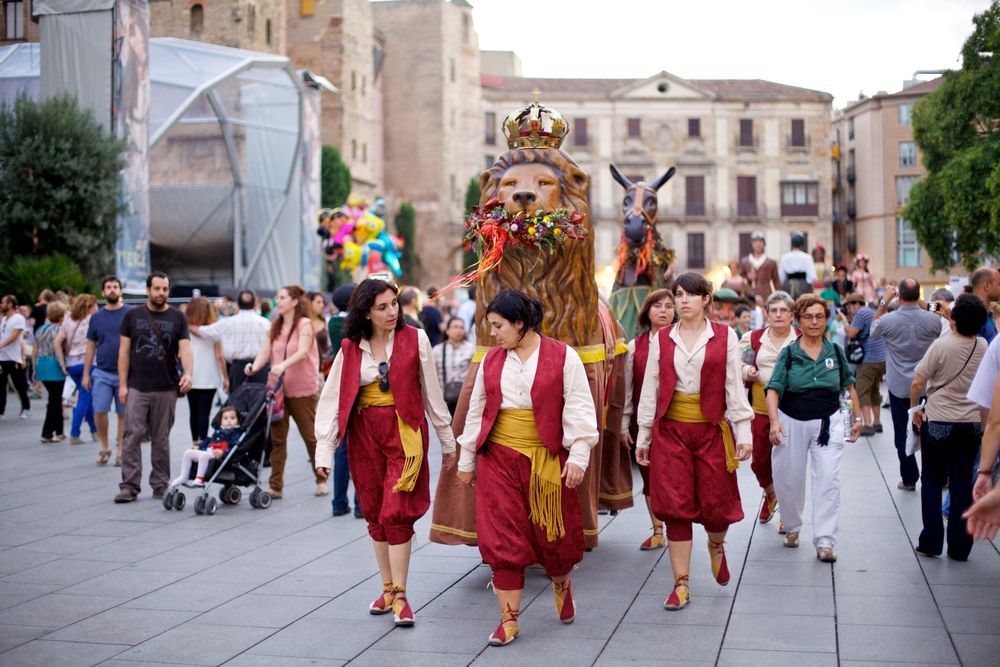
At La Mercè, the program is so varied that everyone finds their own place. Each year, it is a tradition that a guest city is responsible for organizing some activities in collaboration with the City of Barcelona. The starting signal for the festivities is usually given by a famous person from the Spanish scene: politicians, painters, illustrators, artists, mayors...
Below, you will find some of the most striking proposals that are celebrated during the festivities of La Mercè in Barcelona:
One of this festival’s strong points is the free outdoor concerts. Parc del Fòrum, Plaza de Cataluña, the area around Montjuïc, and Plaza Real are just a few of the spots you can check out to enjoy Spanish music, or Catalan music, depending on the artist.
As every year, the program varies and different artists perform in the streets of Barcelona. Singers and groups of the Spanish and international music scene come together with their fans to liven up the festivities of La Mercè. In previous years, artists such as Miki Núñez, Carlos Sadness, Carlos Baute or Chloe Philips have filled the stages with music.
You can not miss it! Maybe one of your favorite artists will be in the program.
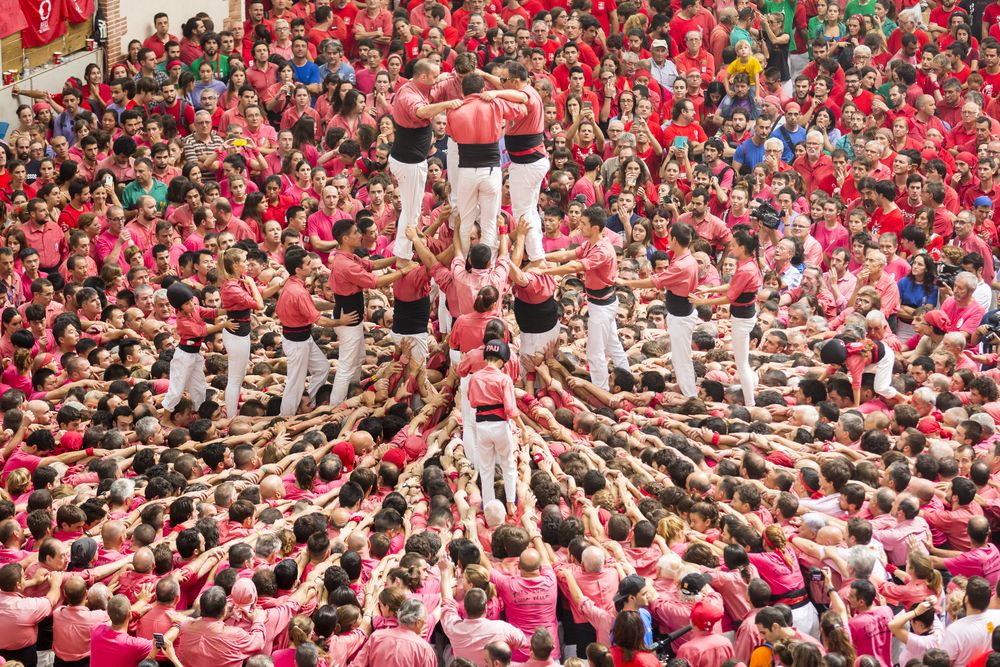
During the day, Ciudadela Park will be filled with street performers specialized in theater, dance, juggling, and other disciplines. Gigantes and cabezudos (impressive costumed figures with enormous papier-mâché heads) will be roaming the city squares, and there will be no lack of typical sardana dancing and the traditional castellers (pictured above).
When the sun goes down, light and fire take over the streets. Correfocs (fire-runs) and ball de diables (devil dances) light up the night with sparks and fireworks. Plaza de Sant Jaume is one of the best places to enjoy these spectacular events. If you’re a fan of photography, don’t miss this opportunity to capture these utterly unique moments.
You can also enjoy a pyromusical show at the Magic Fountain of Montjuïc. If you can’t get enough of the beach even in September, Barceloneta Beach is a good viewing point for fireworks shows all week long.
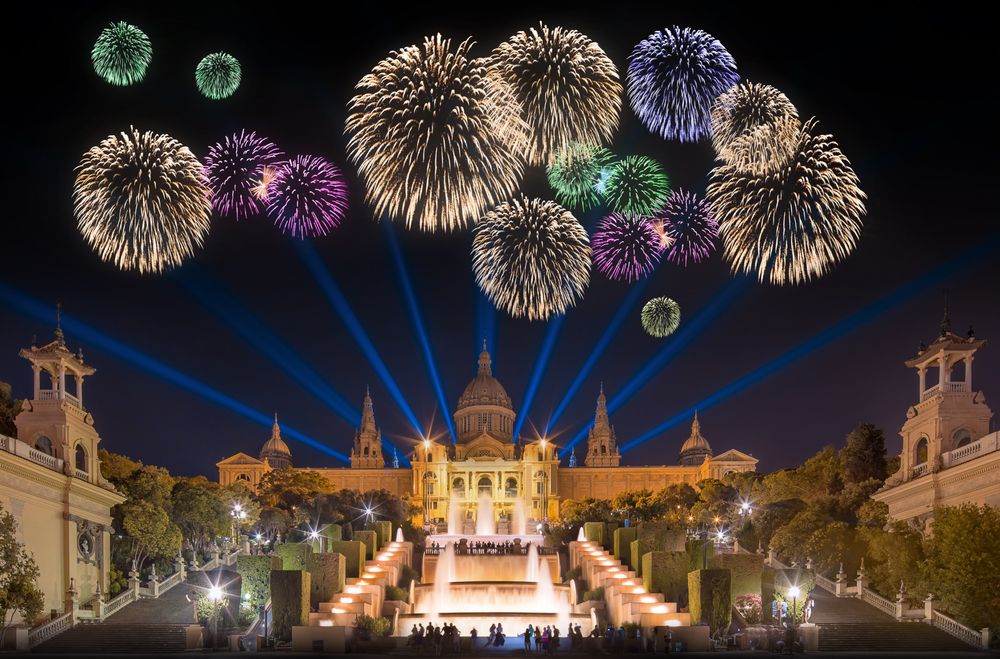
The street program of La Mercè goes hand in hand with a cultural agenda of the most careful. So, during these festivities, you can access in its open day to historical buildings and monuments such as the Monastery of Pedralbes, the Picasso Museum or the Palau de la Generalitat. Check the schedule to find out which day is free to enter all these emblematic places of the city.
In addition, we encourage you to visit the Centro Cultural del Born, where you will find the most interesting exhibitions.
So do not hesitate, if you want to discover the city of Barcelona from the inside, we invite you to come during the best week of the year to do so. Take advantage of your stay to take any of our Spanish courses at donQuijote school, learn Spanish in Barcelona and let yourself be surprised by the festivities of La Mercè.
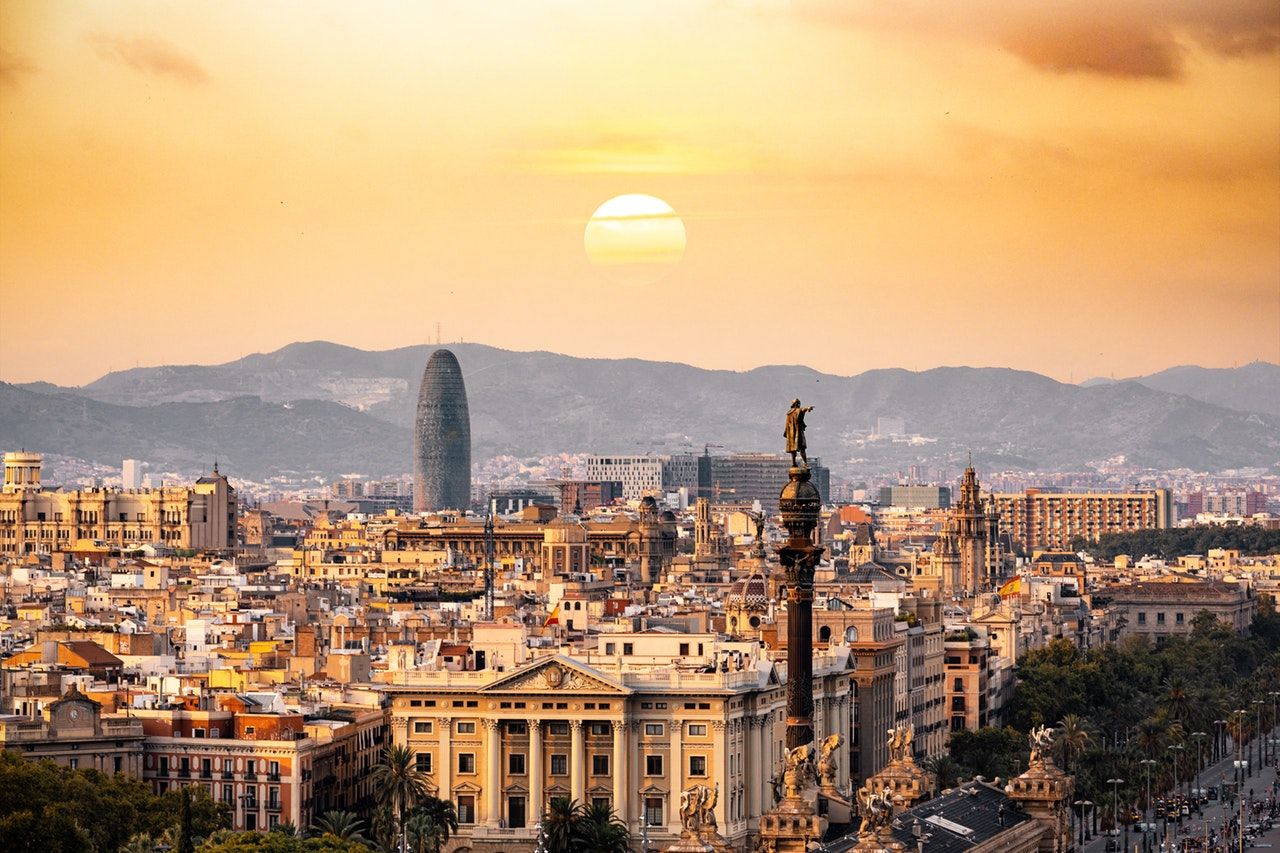
193 years ago, Nicéphore Niépce took the world’s oldest surviving photograph from his window in Saint Loup de Varennes, France. Since that blurry, black and white image was taken with an X-ray spectrometer, many things have changed in photography.
Nowadays, photography is a mass phenomenon. Millions of people can take high quality pictures with their own smartphone, and social media has radically changed the way we share images with the world. To celebrate World Photography Day, we want to explore with you the charm of one of the most photographed cities in the world: Barcelona.
Keep on reading in English or click here to switch to Spanish and discover the 5 best photo spots in Barcelona. Join our trip to this beautiful city and capture dreamy scenes with your own camera!
One of the things that makes Barcelona a magical city is the lovely combination of mountain and sea. Browsing the Internet, you’ll find hundreds of images with a bird’s eye view of the long avenues running into the crystal clear waters of the Mediterranean. Here are some of the best photo spots in Barcelona that will help you get the perfect picture:
Tibidabo Mountain

In the heart of the Collserola mountain range, this peak rises 1,600 feet above the city. Its viewpoint is a perfect balcony from which you’ll be able to get the whole panoramic picture of Barcelona: from Fòrum Park to Montjuïc. Even though Tibidabo’s height won’t allow you to appreciate the small details of the most emblematic buildings of Barcelona, its colorful amusement park will give your pictures a special circus-like touch.
Carmel’s bunkers

One of the best photo spots in Barcelona is this old anti-aircraft battery. After the Spanish Civil War it turned into a shanty town, and nowadays it is a must-see for every photographer visiting the city. At 850 feet high, its ruins offer a 360º view of Barcelona.
From the bunkers you’ll get the famous picture of the Eixample’s grid. This is a neighborhood designed in the 19th century whose blocks are organized in a precise geometrical pattern, gifting photographers around the world an architectural spectacle for the eyes.
Park Güell

Antonio Gaudi’s masterpiece is a Modernist icon. Its vibrant colors, undulating shapes, and trecandís tiles are immortalized every day by hundreds of tourists looking for Instagram likes.
In addition to the Drac (the salamander that welcomes visitors at the entrance staircase), the Banco Ondulado, and the Pórtico de la Lavandera, Park Güell offers a very interesting view of Barcelona’s skyline.
Descending from the heights as we approach the sea, we find some of the best photo spots in Barcelona. We encourage you to go out for a walk with your camera and discover the urban landscape. Let yourself be carried away by the streets of Barcelona until you reach the sea!
Passeig de Gràcia

This important avenue is much more than a luxury shopping street. On both sides of the street, you’ll find two notorious houses: la Pedrera (or Casa Milà) and Casa Batlló. Both of them were created by Gaudí.
The first has a white, undulating façade that reminds us of a curtain, full of picture windows. Its towers and chimneys are two of the most photographed things in Barcelona. Casa Batlló is a colorful building whose façade, made of red, green and blue tiles, looks like dragon scales. During important festivities, Casa Batlló is dressed up and becomes even more beautiful. To celebrate Sant Jordi, for example, it balconies are covered with hundreds of red roses.
Barceloneta at sunset

When the sun goes down, Barcelona’s sky turns purple. One of the best photo spots to enjoy this color show (and why not, capturing it as well) is the beach. From Barceloneta you can look at Barcelona’s most popular hotel, Hotel W, standing right next to the setting sun.
We hope you found this list of the best photo spots in Barcelona interesting. Have you considered taking a trip to one of the most cosmopolitan cities in Europe and booking a Spanish course with don Quijote? You’ll unleash your creative skills and return home with incredible photos to share.
For now, watch the video below to get a visual idea of how some of the places we talked about today really look. Enjoy!
Do you like to travel to find the best places to learn Spanish? It's important to know the best places to learn Spanish with culture and activities for the users.
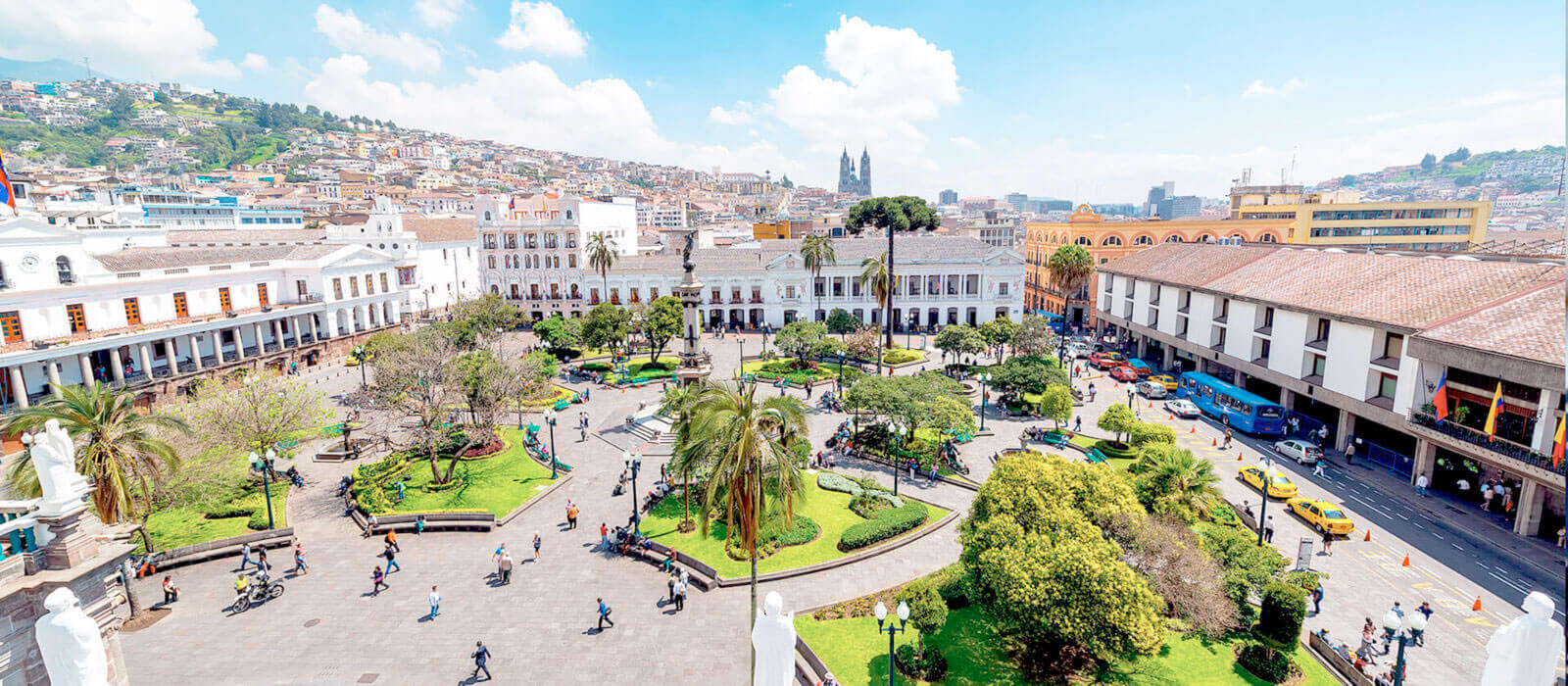
Thinking about traveling to find the best places to learn Spanish but don't know where to start? Look no further and let us help you find the best Spanish places to visit!
Spanish is spoken in many different countries and each one has a different appeal for visitors: whether it's history, nature, or culture you're interested in, you will find your perfect match. Let's explore together different destinations where learning and practicing your Spanish won't be a problem. Here are the seven best places to learn Spanish and donQuijote has a school in each one.
You know, the Spanish language comes from Spain, so wouldn't it be a great place to start? While there are differences between the varieties of Spanish used in Spain, everyone can still communicate with each other.
The Spanish language you learn in Spain is different to South American because of the different ways it is spoken. But when you learn Spanish in Spain, you will be able to communicate in any country that speaks the same language. You may practice your knowledge before studying abroad in Spain by listening to the radio, watching your favorite show in Spanish, or download a Spanish app on your smartphone.

Madrid is the capital of Spain and is known for its energetic culture, tapas and great ambiance. Most locals are very friendly and like tourists who want to learn to speak their language. You can start your journey with donQuijote and learn Spanish in Madrid. This city is the 6th most populated place in Europe and its clearly spoken accent is just great for learners.
Spanish classes in Madrid are very interactive, and everything you study in the classroom you will put into practice with a friendly local. What better way to learn Spanish in Madrid than over a glass of wine and free tapas?
On the other side, you can choose to study and learn Spanish in Barcelona. Barcelona is surrounded by sunny beaches and its great food makes it a long-standing favorite destination for tourists.
Barcelona could be the best place to learn Spanish because of its melting pot of individuals and their cultural blend. So you can take a Spanish course in Barcelona to live a cultural experience as you practice the language with native locals. This course will also help you experience a new lifestyle by making new friends and having fun in a new language.
Just imagine after your Spanish classes in Barcelona, you and your new friends head out to eat with an incredible view of the Mediterranean Sea. Sounds incredible!
Truly immerse yourself in the Mexican culture and traditions through the language in Latin America by trying out one of our Spanish immersion programs in Mexico. Learn Spanish in Mexico throughout your daily routines and take advantage of the opportunity to practice your Spanish in your everyday life.

DonQuijote offers you three destinations to learn Spanish in Mexico: Playa del Carmen, Oaxaca or Guanajuato.
Our favorite place is Playa del Carmen: a perfect destination for a Caribbean getaway with beautiful beaches, lush forests and incredible weather all year round. A cosmopolitan city where you can practice your Spanish and while taste cochinita pibil or panuchos.
Another of the best Spanish places to visit in Mexico is the state of Oaxaca, in the southwest of the country, which has a coast bathed by the Pacific Ocean. It is one of Mexico's top destinations, thanks to its rich culture and amazing gastronomy. You will make long-lasting friends and open new doors for your future while you study the language in Mexico with donQuijote.

Surround yourself with gorgeous nature! Come and learn Spanish in Costa Rica and have fun while doing it. This country has amazing sights and here you will be able to study new vocabulary while you're ziplining through the jungle. Study Spanish in Costa Rica while enjoying some natural hot springs or visiting an adventure park. It's the most biodiverse country on Earth, so keep an eye on its amazing wildlife! Discover another of the best Spasnih places to visit in Latin America with don Quijote.
Love red wine and advanced cuisine of all types of food? You can venture off after your classes and indulge in the culture. Argentinians are famous for their distinctive and captivating accent, and they love exchanging and learning new vocabulary words with tourists. So, feel at home and make the most of your stay while you learn Spanish in Argentina and share mate with your friends.

Buenos Aires is known for its high population, and its cultural scene makes it one of the world’s top destinations. Many of the Spanish schools in Buenos Aires offer immersion to help students experience the real Argentina. Since language and culture go side by side, what better way to learn Spanish in Buenos Aires than a highly customized program that tailors your interests and helps you learn faster?
Everything you have heard or seen on TV about this country you must delete it from your memory and start off fresh: a lot has changed since the 90s. Spanish schools in Colombia are surrounded by the country's lush landscape and offer many opportunities to practice your new linguistic skills. One of the many reasons to learn Spanish in Colombia is that the locals clearly pronounce their words and speak slowly, which makes it very easy to understand.

Gain the ultimate experience and learn Spanish in Bogota or Cartagena while you get to know the local traditions. The Spanish schools in these cities will teach you how to communicate in supermarkets, restaurants, and other places where you will want to talk to people on an everyday basis.

This historical and vibrant country is known for its music, art, and culture. Take a tour around the city and study Spanish in Cuba in a way you never expected. Jump inside a 1950s car and see vintage art pieces on your way, and don't miss the breathtaking architecture that awaits you just around any corner in Havana, Trinidad or Santiago de Cuba. Travel to Cuba while you learn to dance through old Havana and, of course, fall in love with the locals' Caribbean accent.

Explore the beauty of the rainforest and wildlife while you learn Spanish in Ecuador. Most locals are very open to helping international travelers around the area. A good Spanish school in Ecuador prepares you for basic conversations and how to travel around cities like colonial Quito with no problem. People from Ecuador speak slowly and clearly so it doesn't matter if you're an absolute beginner, you won't struggle to communicate. So, come and study Spanish in Ecuador, it will be the experience of a lifetime!
These are just the seven best places to learn Spanish, but you will find countries and cities all over the world where mastering this language will be fun and unforgettable. If you want to start your adventure in the language, don't hesitate any longer and come with don Quijote to study Spanish in Spain or Latin America.
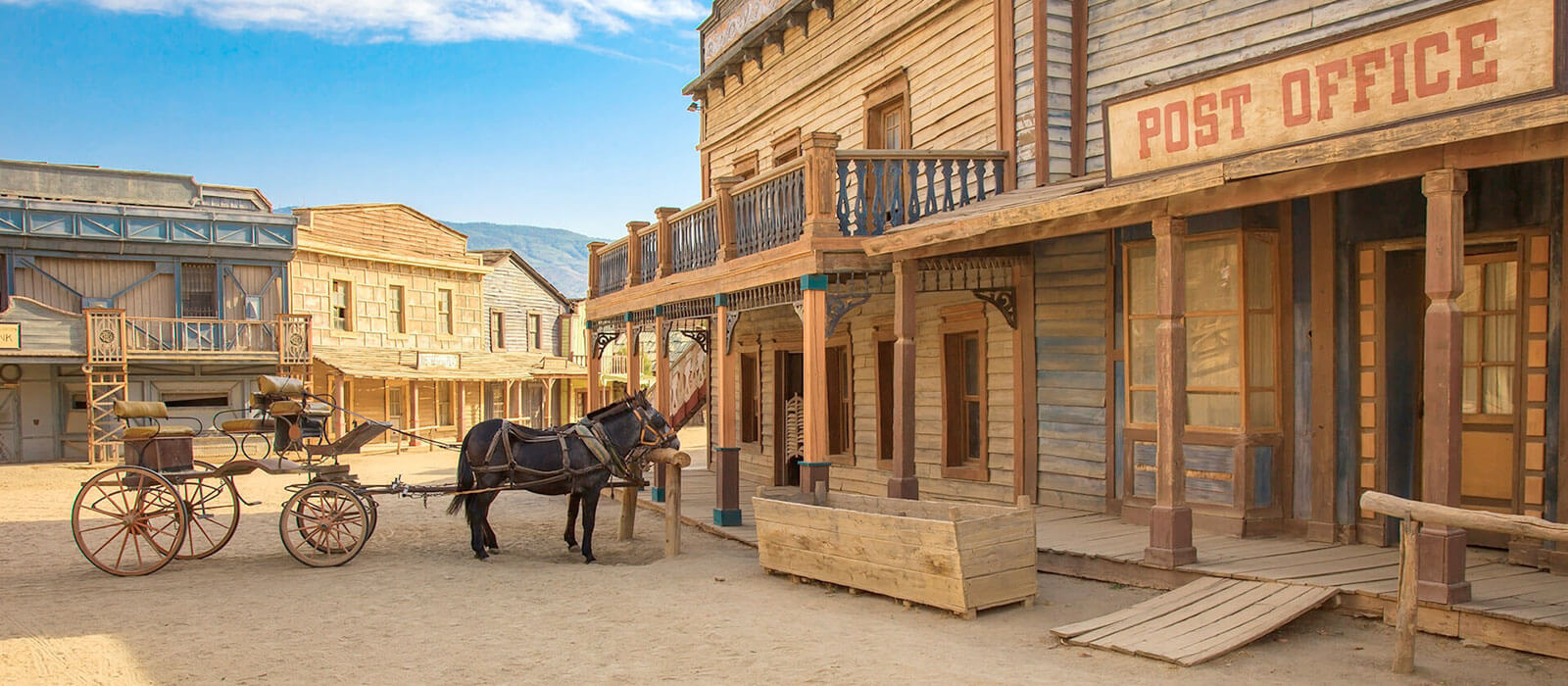
Today, Spain is a country that is very popular with film director and producers. Thanks to the excellent combination of a diverse geography, excellent infrastructure and cheaper filming costs means that you have probably seen more of Spain than you may have imagined. The arrival of the international productions really began in the 50's when David Lean discovered the deserts of Almería when he shot Lawrence of Arabia. In this list, let's see if you recognize any of these Spanish locations.
|
This is not the most filmed location in Spain but it is something we see almost daily (especially if you have kids) or at least we see its influence. First mentioned in 1120, this castle was built atop an Arab fort and was used as the home of King Alfonso VIII at the end of the 12th century. The castle we know today was finished in the mid 13th century under the reign of Alfonso X of Castile. The Castle's most important moment was when Isabel's brother, King Enrique IV, died. There was a struggle between her and her niece, Juana la Beltraneja, for succession to the throne and Isabel took refuge in the castle and later proclaimed herself queen. A bloody 5-year war with Portugal would ensue and the rest is history. So where does the movie fit in? Simply, this castle was one of Walt Disney's inspirations for Sleeping Cinderella's castle. Whenever you visit Disneyland or watch a Disney movie, keep an eye out for the castle and you'll see a little bit of Segovia every time. |
|
Located in the beautiful urban Maria Luisa Park in Seville, the Plaza de España is a magnet for tourist and Sevillanos alike. Constructed in 1928 for the Ibero-American Exposition World's Fair, this Renaissance Revival landmark was used to house Spain's industrial and technological exhibits. Around the Plaza you will find tile walled alcoves along the building and within each one is a representation of the provinces of Spain. There is also an artificial river that borders the plaza where you can rent a boat and have a unique visit of this historic plaza. There have been so many films shot here it is difficult to single on out, but the one that stands out for me is from my least favorite Star Wars movie, Star Wars Episode I: The Phantom Menace. Here there are various scenes shot where the Plaza de España is Naboo. It also reappears in Episode II. Another memorable appearance is in David Lean's Lawrence of Arabia. |
|
One the most iconic buildings in Spain, the Guggenheim opened its doors in 1997. The opening of this building was the defining moment in the history of Bilbao since it signaled the rebirth of a city that was hit by a depressed economy along with a waterfront that would have made Detroit seem like Paris. Largely considered the most important architectural work since 1981, the Guggenheim rose up out of the rust and decay like a phoenix, transforming Bilbao into an economic motor and cultural showcase for all of Spain. In Brosnan's third Bond movie, The World is Not Enough, the opening segment is shot in Bilbao and around the Guggenheim museum. Although it isn't a movie, Mariah Carey's video "Sweetheart" was shot her too. |
|
An estate hidden in the fog on the island of Jersey is the center for the mysterious happenings to Nicole Kidman and her family in the blockbuster movie The Others. This estate, which is not located on any island, is actually located close to a major highway that connects the northern city of Santander with Madrid. This palace is located on a 148 acre (60ha) estate 30 miles south of the stately city of Santander—and was once the retreat of Spanish royalty. Today the palace remains in private hands owned by the Duke of San Carlos. If you'd like to visit, you'll have to be invited to a wedding—or getting married yourself— or rent it out as a B&B the next time you're here negotiating the purchase of a small country. |
|
What looks like a Spanish Mission is actually a farmhouse located in the desolate Cabo de Gata Natural Park near Almería. Built in the 18th century by Dominican Friars (Fraile in Spanish), this farmhouse was the epicenter of a spectacular crime known as the Crimen de Nijar (Crime in Nijar) which would captivate an entire country in 1928. The story of this crime is retold in the movies Bodas de Sangre (Blood Wedding) based on the Federico Garcia Lorca play. This building was home to another criminal figure. Do you remember "El Indio"? This is the character brought to life by Italian actor Gian Maria Volonté in the movie For a Few Dollars More, the second in Leone's "Dollars Trilogy". In the movie the Friars Farmhouse is used as El Indio's old mission hideout.
|
|
Soria is a foreign land even for Spaniards! Like Almería, this is a part of Spain that largely goes ignored but unlike Almeria, Soria is only a little more than an hour from Madrid. Located on the Spanish Meseta, this province has arctic-like winters and hellish summers. Given these circumstances, David Lean must have thought he was in Pre-Revolution Russia when he chose Soria to recreate the Russian Steppes of Doctor Zhivago. The little town of Candilichera (pop. 204) would be the location for Yuri's country dacha where he, Tonya and Sasha escaped to when Moscow became too dangerous. It is also here were Yuri would have an affair with Lara in nearby Yuriatan. Like much of the movie, Yuri and his family would stay here until the revolution would come between them…again. |
|
The Osborne bull is a billboard that you can find along highways all over Spain. These 50 ft. (14 m.) tall billboards which are nothing more than a silhouette of a fighting bull were first put up in 1958. Today, of the many that existed there now remain 91 and can be found in almost every part of the country. Since 1994 the bulls have been considered an "aesthetic and cultural" icon and have been permitted to stay in place along the highway even though the law prohibits roadside advertising. If you remember Javier Bardem and Penelope Cruz in their breakthrough movie Jamon, Jamon, you will remember the bull as the place where the characters in the movie go to escape, seduce and… |
|
Peñiscola today is a great beach town frequented primarily by Spaniards. Its blue flag public beach is considered one of the most tranquil and family friendly beaches on the Valencian coast. What tourist and movie people have noticed about Peñiscola is its imposing castle that lies atop a rock outcrop surrounded by the sea. Constructed by the Knights Templar on the ruins of a Moorish Alcazaba at the start of the 14th century, It's most famous resident was the antipope Benedict XIII, or the Papa Luna in Spanish. This castle served as the backdrop for Charlton Heston in his classic 1961 movie El Cid. In the movie, Peñiscola and its castle were used to portray 11th century Valencia. |
|
Considered the most expensive street in Barcelona, this thoroughfare houses buildings designed by Gaudí like the Casa Batlló and Casa Milà. You will know this street for its appearance in Woody Allen's 2008 movie, Vicky Cristina Barcelona. In one scene, you will notice Vicky and Cristina walking among the human shaped chimneys located atop the Casa Milà. This building is open to the public along with access to the rooftop which was also used in the Jack Nicholson movie The Passenger. For the visitor to Barcelona this street is as obligatory a stop as the Champs-Élysées is in Paris. |
|
This park is home to some amazingly weird rock formations nestled in a pine forest in the Sierra de Cuenca, 2 hours east of Madrid. Here some of the most memorable scenes from Conan the Barbarian were filmed for this fantasy about an orphaned slave turned warrior. Today the Enchanted City is a popular destination for fans of Arnold and Conan. Because it is on private property, you can visit after paying a 3€ entrance fee. |
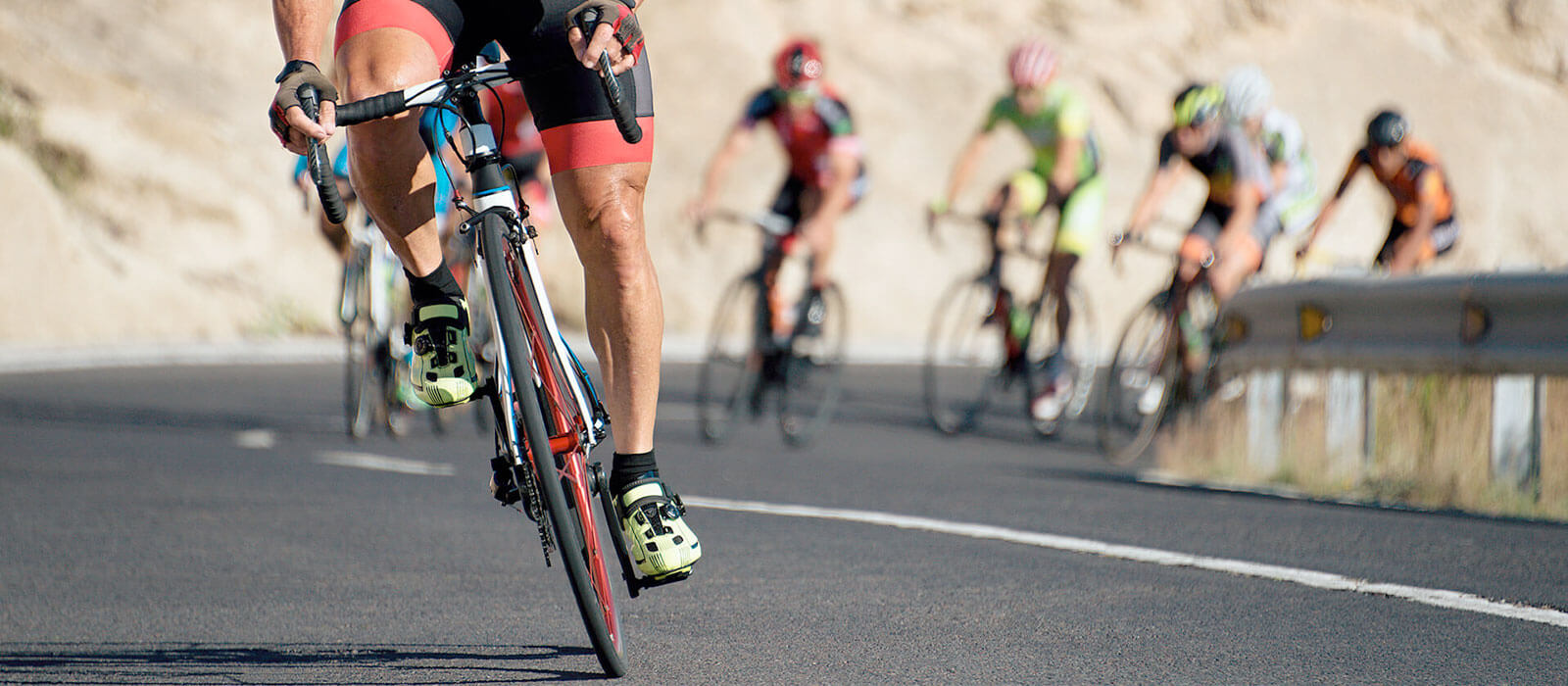
WHAT'S HAPPENING IN ...
The Spanish sporting calendar: Top Ten Annual Events
Here's our top ten annual sporting events in Spain, a full calendar of sports action that we think may come in handy for anyone planning on being in Spain. These events could coincide with a weekend city break, an interrailing traveling adventure, or an extensive family holiday. Organized by date rather than preferential order, we therefore bring you Spain's Top Ten Annual Sporting Events... ready, steady, go!
|
Location: Madrid Want to join 15,000 other runners and hit the streets of the Spanish capital, making your way around a truly spectacular landmark-studded 26.2 mile route? Or not quite ready to take on the full marathon distance but still eager to put your active side to the test while being spurred on by the cheers of an incredibly enthusiastic Madrilenian crowd? Well then, Madrid's annuall marathon, which also includes a 10k and, as of next year, a half marathon course, is the perfect event for you! Boasting famous sights along the way such as Santiago Bernabéu Stadium, Puerta del Sol, the Royal Palace and Retiro Park, and offering a real party atmosphere thanks to numerous live music performances, a finish line concert and even a complimentary gift bag, what's not to love! Be sure to sign up online now and combine a city sightseeing trip with an unforgettable sporting experience! |
|
|
|
Location: various Why not enjoy the springtime sunshine on one of Spain's verdant golf courses while watching Europe's greatest players executing their finest strokes!? Part of the prestigious European Tour, the 101 year-old Open de España tournament continues to attract the continent's most gifted golfers year after year. What's more, the varying annual locations couldn't be better for tourists; from Barcelona in 2011 to Seville in 2012, to Valencia in 2013, this first class tournament won't only satisfy your golfing passion, but will equally give you the opportunity to visit one of Spain's major cities! |
|
|
|
Location: Madrid Always wanted to see the likes of Rafael Nadal, Serena Williams and Andy Murray performing their finest shots in a globally renowned tennis tournament but never got round to buying tickets? Then, make this a thing of the past and book now to see world class players in a world class city! Haying only opened its newly refurbished and highly praised red clay courts this year, Madrid's Caja Mágia sports complex is guaranteed to provide ardent tennis lovers with yet another week of sporting excellence when the competition returns in 2014. |
|
|
|
Location: alternates between Barcelona and Valencia Thanks to the multiple victories enjoyed by Spain's F1 racing driver hero, Fernando Alonso, the Spanish formula 1 Grand Prix has considerably grown in popularity and importance among Spaniards in recent years. British visitors will fancy taking a trip to Barcelona's Circuit de Catalunya in 2014 to see Hamilton challenging Alonso and team Ferrari's 2013 domination. Be prepared to watch a 66-lap long auto racing extravaganza of tight bends, careful tactics and rapid accelerations! |
|
|
|
Location: Madrid Got a bit of a daredevil streak in you? Then be amazed by the jaw-dropping motocross stunts carried out by the world's greatest (and definitely most fearless!) riders at Madrid's globally renowned Las Ventas bullring. Welcomed into the arena to the regal sounds of drum rolls and trumpet fanfares, these motocross kings provide 25,000 enthralled spectators with a non-stop, adrenaline filled spectacle of whips, turndowns and front flips. Human beings they may be, but the rider's tricks are completely out of this world! |
|
|
|
Location: Gijón, Asturias Perhaps a less familiar sport for some, canoeing takes center stage in the beautiful coastal town of Gijón during its highly popular annual competition, the Descenso del Sella. Now when I say a canoeing competition, I don't mean that you might be able to spot a few canoeists making their way calmly down the River Sella... I mean the entire river is filled with more than 1,000 participants from all over the world who, with the support of an equallly impressive large, enthusiastic and often fancy dressed crowd, battle it out over a physically demanding 20 km course in the hope of winning one of the most desperately sought after category trophies. |
|
|
|
Location: various Hoping to spend your summer holiday in Spain next year? Felt inspired when you've watched the sheer determination of the world's greatest cyclists as they climb the arduous ascents of the three annual Grand Tours? Well, why not replace your postion on the sofa at home with a spot in one of the numerous enthusiastic crowds of the Vuelta de España and watch in awe as your cycling heroes master hair pin bends, overcome gruelling gradients and fight against the agonizing lactic aced overload of such an incredibly exhausting threee week long cycling competition. With a route which passes through many of Spain's 15 mainland regions, you're bound to find a stage near you, so get researching and keep your eyes peeled for the prized red jersey when you arrive! |
|
|
|
Location: Barcelona, Bilbao, Granada, Las Palmas, Madrid and Seville As the reigning European champions, second in the FIBA World Rankings and having marginally lost to the historically dominating USA basketball team in the final of the last two Olympic Games, the national Spanish men's basketball team is going from strength to strength. Moreover, delighted to be chosen as the host nation for the 2014 FIBA World Cup, Spain, with the support of an inevitably passionate home crowd, will endeavor to outmanoeuvre their US rivals and give their loyal fans the winning result they so desperately desire. So come and join your fellow basketball aficionados as Spain attampts to make sporting history! |
|
|
|
Location: various Arguably the most widely recognized of sports in Spain owing to its impressive skillfull players, its high capacity stadiums and its internationally famed league, La Liga, football in Spain provides fans with an atmosphere like no other. Ten months long, Spain's La Liga brings together the world's best footballers as they fight to win both the highly esteemed competition title and a place in the UEFA Champions League. However, the highlights of the season have to be the two Real Madrid vs Barcelona fixtures. Ronaldo or Messi, Alonso or Iniesta, Benzema or Xavi... the only question is... which football-mad Spaniards will you choose to side with? |
|
|
|
Location: Santander With qualification for the Río 2016 Olympic Games at stake, the 2014 ISAF World Championships, taking place in the stunning northern Spanish port city of Santander, is set to be a two week long sailing competition of the highest quality. With over 1,400 particpants, more than 1,000 boats representing the 80 nations, this quadrennial event is sure to be an absolute crowd pleaser. |
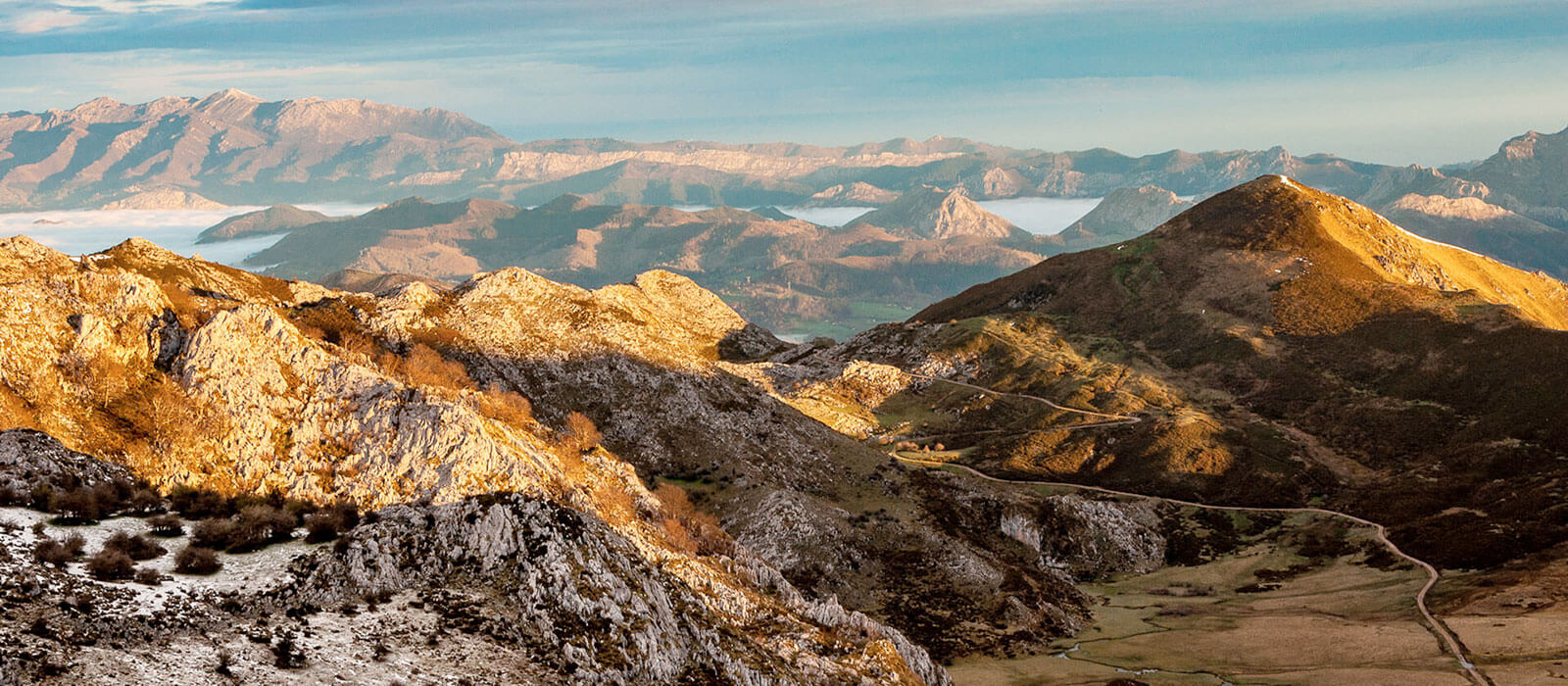
In spring, nature is reborn and everything about it invites us to renew our ties with the planet. It’s a time that charges us with energy and prepares us for the splendor of summer.
We want to take you to ten landscapes that we think are inspiring, uplifting and full of positive energy: from the glaciers in southern Argentina to the Peaks of Europe, and the Arabic gardens in Granada to the rich history of the Alberca cave… This week we have a special route for you designed to highlight the beauty of Mother Nature and the marvels made by mankind as you renew your interest in living life in Spanish. Let us guide you through our list of TopTen inspiring places in Spanish speaking countries where you will find harmony, balance and beauty that you will never forget.

This majestic mountain range is located in the center of the Cantabrian Mountains in the northern part of the Iberian Peninsula between the Autonomous Communities of Asturias, Cantabria and Leon.
A favorite destination for Spanish climbers, El Naranjo de Bulnes is one of the most popular peaks and is often considered as the birthplace of the sport of rock climbing in Spain.
With over 64,000 hectares of unforgettable landscapes, we recommend the Picos de Europa to anyone who wants to get just a little closer to heaven, in all aspects.

Located in Granada, the Spanish city where the splendor of the Muslim culture reached its highest levels.
The Generalife, a royal summer getaway hidden away behind the massive Alhambra Palace, is a haven of tranquility and balance with its sprawling gardens, beautiful buildings and paths that run throughout the complex.
Stroll through the fresh and serene scenery while losing yourself in the sound of the moving water and the sweet aroma of the ubiquitous plants and flowers…

In the junction between Argentina and Brazil and very close to the Paraguay border are some of the most impressive natural falls imaginable.
With 275 different waterfalls, the roar of falling water can be heard from miles away. It is no surprise that this magical place has been recognized as one of the seven natural wonders of the world.
Iguazú National Park, located in both Argentina and Brazil, offers protection to this unique ecosystem that exemplifies the strength and power that Mother Nature hides within.

Located in Los Glaciares National Park on the southern tip of Patagonia, Argentina, near the town of El Calafate, is one of the world's most impressive glaciers.
This huge river of ice is five kilometers wide and reaches a height of over 60 meters above sea level, where massive icebergs break off of the huge glacier and produce intense sounds.
The location is in a privileged area of the world where one can observe whales and other cetaceans in one of the largest fresh water reserves on the planet.

About 50 kilometers to the south of Barcelona we find a surprising place: the mountains of Montserrat (In Castilian, "Monte Serrado" due to the aspect that years of erosion have caused). It is the most representative mountain in Catalonia and home to a sacred monastery dedicated to the Virgin of Montserrat, a pilgrimage center of the Catalan people.
The Black Madonna (Moreneta), patron saint of Catalonia, is a Romanesque carving that, according to legend, miraculously appeared there in 880. When an attempt was made to move it from its place, it became so heavy that it was impossible to move. This seemed to prove to those who found it that it was the Virgen's will to stay there, where a chapel was built that would eventually evolve into the monastery that we see today.

This cave was inhabited for 35,000 years, and much later it was discovered by a hunter in 1868.
It showcases the most impressive cave art of the Upper Paleolithic period. Many have called Altamira "the Sistine Chapel of Prehistoric Art" due to its beauty, complexity and shear amount of pictures located inside. These prehistoric paintings inspire us to pay homage to our ancestors, an experience well worth the trip through the lovely landscapes of the Cantabrian town Santillana del Mar, where the cave is located.
Visit Altamira Cave and enjoy the harmony of these cave paintings, where you'll experience the memory of a primitive age through the artwork of its people.

The On the volcanic island of Tenerife, near the city of Icod de los Vinos, we can find an impressive example of the telluric force of the volcanoes that formed the Canary archipelago.
The Wind Cave, over 17 kilometers long, is the longest lava tube in the European Union and the fourth in the world. Upon entering the interior of the volcano you observe Mother Nature's majestic engineering work, which makes you shudder as you imagine the roar of liquid lava that once passed through the very spot where you stand now in perfect silence, in the heart of the Teide, where the only melody heard is that of your breathing and your excitedly beating heart...

Near Valdecabras, in the province of Cuenca (Spain), at an elevation of about 1,500 meters is the location of our next site, the Enchanted City.
Carved out of the rocky ground from years of rain and wind erosion, these natural formationswere declared a Natural Site of National Interest in 1929.
The rock formations transport you to a magical landscape where anything is possible and your imagination finds hidden animals and monsters within the rocky shapes.
It is here, next to the Tormo Alto formation that is the symbol of the city, that Viriatus, the Spanish leader of the resistance against Roman rule, was cremated.

This natural park extends nearly 105,000 hectares, occupying parts of the provinces of Huelva, Seville and Cadiz. The name originated from the name "Doña" (Mrs.) Ana de Silva, wife of the seventh Duke of Medina Sidonia, original owner of the land which he used as private hunting grounds. The natural enclave is home to marshes and dunes, an important stopping point in European bird migration to and from Africa in the winter and spring.
This wildlife sanctuary hosts annually more than 300 species of birds, as well as some of the most important Spanish animals, including the highly endangered Iberian lynx. Also located in the park is the site of one of the most important religious celebrations in Spain: El Rocío.
In the village of Almonte, the event attracts more than a million pilgrims each year as they converge upon the village from various different controlled routes to pay homage to the Virgin of El Rocío.
The Peña el Cabrelillo, just behind town hall, is one of Andalusia's longest standing flamenco institutions, a place full of love, faithfulness and a passionate interest to safe guard el cante in its purest form. In the city of Ubeda, the Tablao casa-museo andalusí, next to the Parador, offers the unique opportunity to enjoy flamenco in a gorgeous building on calle Narváez.

In a busy world of Internet and globalization in which being in a hurry has become a normal part of life for most of us, La Alberca, located in the northern part of the province of Salamanca, is a peaceful haven of history where traditions have been carefully preserved.
The village feels like a living museum with its unique architecture.
Surrounded by thick impressive forests, the village is like an island of peace that makes visiting it a must for anyone who finds themselves in the proximity of Salamanca.
Photo thanks to: Max Westby, Granadadian Weirdo, Cadampol, Adry, Yishac, Turismo de Tenerife, Machbel, Rlasaosa, Fernando Cuenca, Turistas x Naturaleza
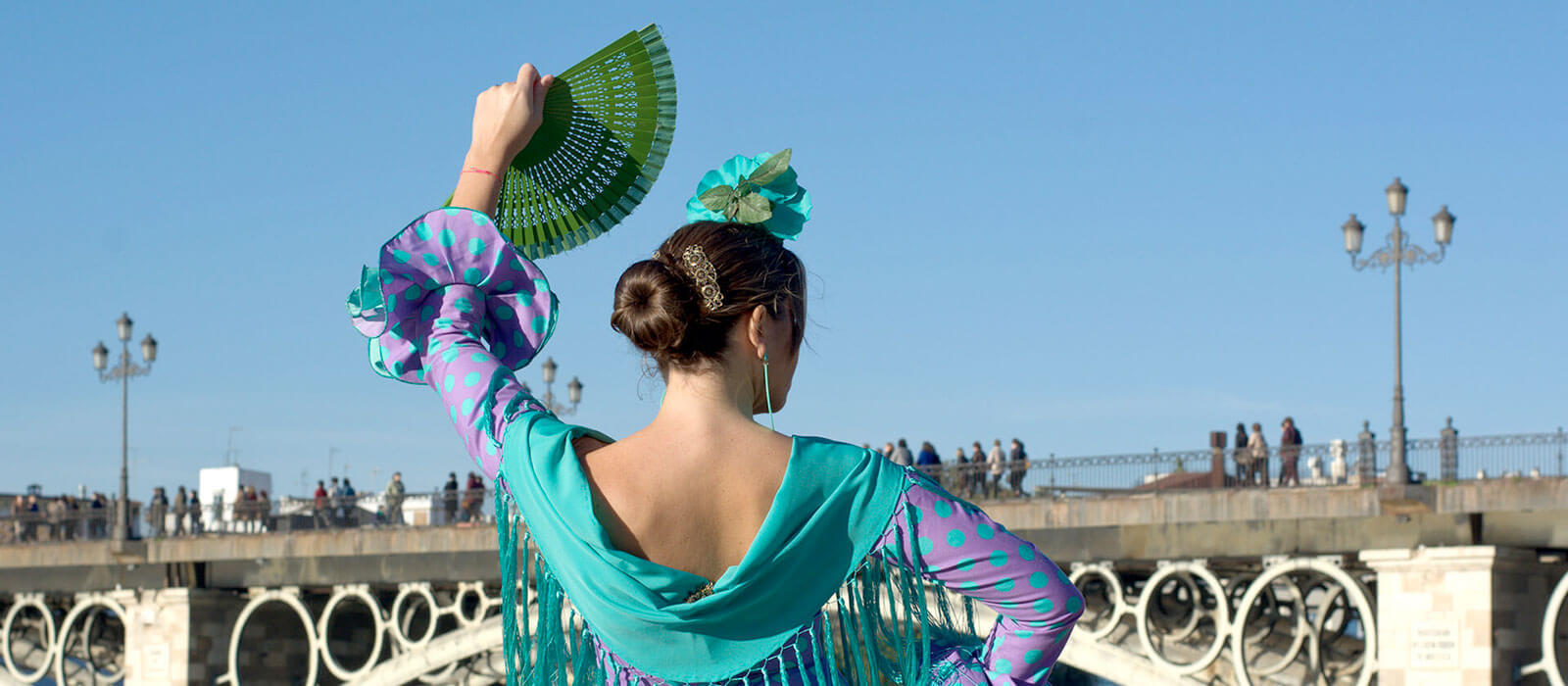
If there's one sound associated with Spain, it's the dramatic melodies of flamenco. Read on and discover must-include spots for your flamenco tour in Spain.
 1. Seville
1. Seville
If you're in Andalusia's vibrant capital city, you've got to go to Los Gallos. Located just two minutes from Murillo Gardens, this is one of Seville's most famous and prestigious tablaos (flamenco venues).
Flamenco lovers won't want to miss the wonderful exhibits displayed at the city's Museo del baile flamenco (Flamenco Dance Museum). You'll find it on the street that bears its name, right next to the Giralda and the Cathedral. Another Seville flamenco hotspot is Puerta de Triana, a performance hall on Castilla street in the legendary Triana neighborhood, famous as a hub for flamenco activity.
 2. Madrid
2. Madrid
Spain's capital seems to absorb the country's most exciting cultural traditions, and flamenco is no exception. The city offers some of the oldest and most intimate venues for catching flamenco action.
The Corral de la Morería, included in The Michelin Guide and centrally located right next to the Plaza Mayor (on calle Morería), is one of Madrid's most historic tablaos. The famous Café de chinita sits in Madrid's historic district, between the Palacio Real de Madrid (the Royal Palace of Madrid) and the Gran Vía. Finally, the Corral de la Pacheca, near the Plaza de Castilla, rounds out a golden triangle of cante jondo (deep song).
 3. Cordoba
3. Cordoba
Heading through the historical Jewish quarter, you'll find El Cardenal, where flamenco performers offer spectacular entertainment to audiences dining on local cuisine in an open patio.
On the back side of the Plaza de la Corredera, La Bulería is another essential flamenco house, along with Rincón del cante at the Plaza de las Tendillas.
 4. Granada
4. Granada
Visitors are strongly encouraged to visit the Camino del Sacromonte to see the Cueva de María la Canastera (the Cave of María la Canastera) and experience joyful cheer accompanied by song, dance, and hypnotic hand clapping.
In the historic Arab district of Albaicín, Peña la Platería is Granada's most vibrant flamenco tablao, a place that's decidedly not designed for tourists, which always guarantees an authentic experience.
 5. Cadiz
5. Cadiz
The lively cheer of this coastal city will invite you to lose your way in the old quarter, where the smooth sounds of guitar strumming and passionate singing guide you to La Cava, next to the Plaza de España. Here, you'll also find the Peña Flamenca de Enrique el Mellizo, named after one of Cadiz´s most historic and celebrated musical figures. This is where seasoned flamenco masters and new-comers alike offer memorable performances for the enjoyment of visitors as they savor the delicious
flavors of Cadiz cuisine.
 6. Jerez de la Frontera
6. Jerez de la Frontera
Considered by many as the home of the cante jondo, this is one of the world's most influential flamenco centers. Back dropped by elegant horses and the robust aromas of sherry wine, the city offers emblematic flamenco performance halls such as Peña la Bulería in the populated neighborhood of San Miguel, next to the Ermita de San Telmo. The sense of humor that characterizes the people of Cadiz is recalled in the name of another popular Jerez tablao: El lagá del Tío Parrilla (located just across from the Museum of Archeology), which offers the most spectacular dance shows imaginable.
 7. Malaga
7. Malaga
The Peña Juan Breva tablao sits huddled by the foot of the Gibralfaro Mountain, where it is cooed by the city's unique traditional melodies.
Its stage has witnessed some of the greatest flamenco performances ever. If you'd like to not only observe, but also participate in this high passion art form, you can always head to the Liceo Flamenco, between the Cathedral and Gibralfaro Castle, where you can visit the flamenco museum, taste wines from Malaga and take dance and guitar lessons.
 8. Barcelona
8. Barcelona
As a city that has historically received large amounts of people emigrating from Andalusia, Catalonia's capital is home to some of flamenco's most acclaimed artists. Right downtown on the Rambla, opposite the Teatre del Liceu (the cathedral of classical and opera music, you'll find the Tablao Flamenco Cordobés. Crossing the street you come across La Traviata a Sara Baras.
The legacy of Carmen Amaya, perhaps the greatest flamenco dancer in history, lives on at El Tablao de Carmen, located in the well-known Poble espanyol, on Montjuic.
 9. Jaen
9. Jaen
The Plaza Coca de la Piñera, next to the library, puts on a surprising program of flamenco shows nearly all year round.
The Peña el Cabrelillo, just behind town hall, is one of Andalusia's longest standing flamenco institutions, a place full of love, faithfulness and a passionate interest to safe guard el cante in its purest form. In the city of Ubeda, the Tablao casa-museo andalusí, next to the Parador, offers the unique opportunity to enjoy flamenco in a gorgeous building on calle Narváez.
 10. Murcia
10. Murcia
This city-province-autonomous community (all in one) has a special flamenco tradition, as demonstrated in the Festival de Cante de las minas, celebrated in La Unión on the last week in March. At this yearly festival, Spain's best flamenco singer is awarded flamenco's equivalent to the Oscar, known as la lámpara minera. In the city of Murcia, the historic Teatro Romea has been home to the Cumbre Flamenca de Murcia for the last twenty years, a symposium that gathers the most respected singers, guitar players and flamenco experts for a three week period to discuss the finer points of the art and to offer special performances.
We hope that after this quick tour you decide to include some of these cities on your own tour of Spain, where the magic of flamenco awaits to inspire you in true Spanish style.
Photo thanks to: randomix, im elsewhere, Gabrilu, Placida, Dani, Johnny Shaw, Sofie, Migpascual, Dariorana, Keith Williamson
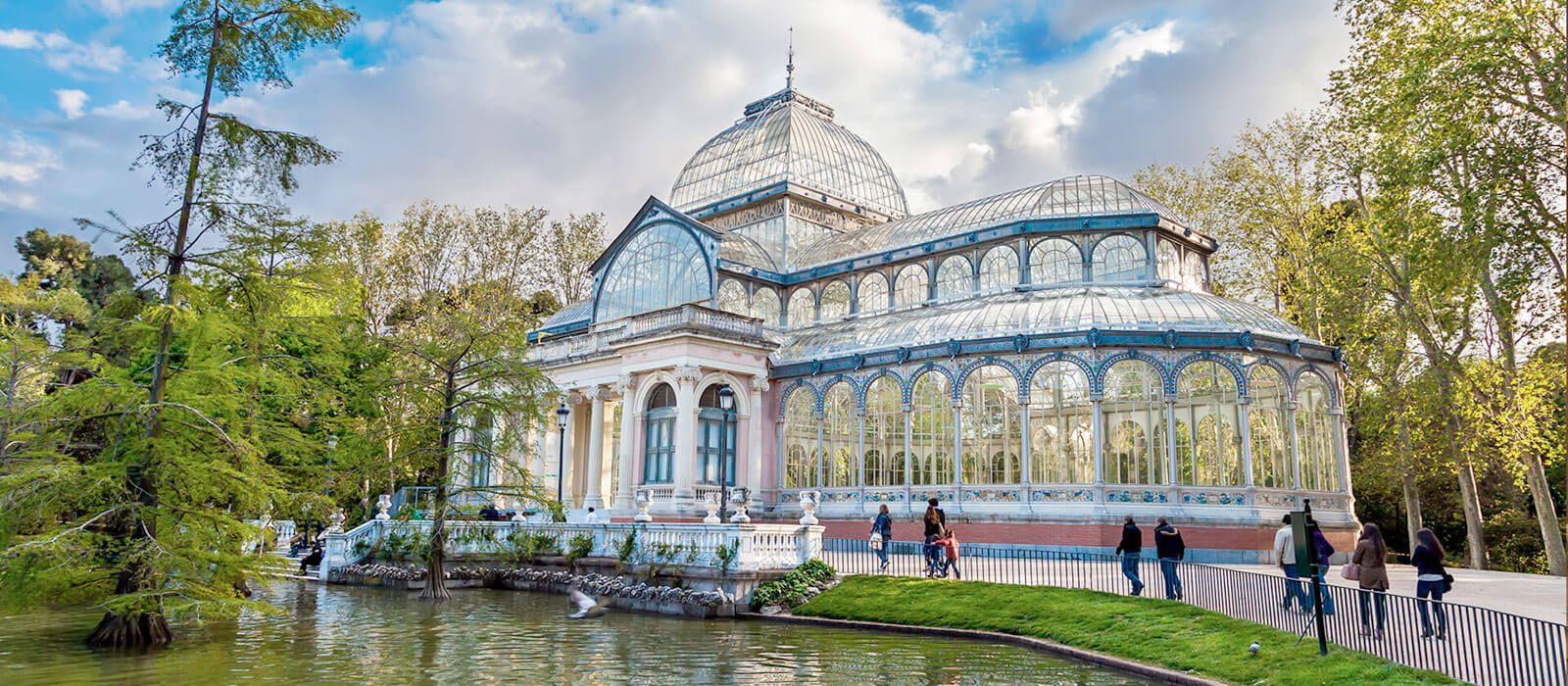
Gardens are places that are full of sentiment, spaces that offer visitors the chance to collect their thoughts and to dream. Many of the amazing gardens in Spain also offer scenic aesthetic expression, where beauty is not only created by planting plants and trees, but also by harmonizing and maintaining a balance of all the elements found in nature such as water and air. Let’s take a tour of some of Spain’s most historical and most impressive gardens.
The magical gardens of the Alhambra, full of legends and mysteries, may take the visitor’s mind to the sublime atmosphere described in the tales of The One Thousand and One Nights. Built on a rocky hill and far-off peak of the Alhambra, the combination of light and green here creates a wealth of decoration that includes the landscape that lies beyond the palace walls, visible from strategic viewpoints. Paco de Lucia has a song called “Generalife bajo la luna” that celebrates the garden’s beauty.
Buen Retiro Park was designed in 1640 and opened to the public during the time of Charles III. Today, El Retiro has become a symbol of Spain's capital city. The land is occupied by 15,000 different types of plants and trees including the French Parterre, Versailles-style, and the Rose Garden; it is also home to numerous varieties of flowers. The monument to King Alfonso XII situated alongside the pond is one of Retiro Park’s must-see attractions.
The delightful Real Alcazar of Seville is one of Spain’s great palace complexes, and perhaps the oldest. It is the original representation of Spanish style and Islamic expression adapted to the Christian world. This once was the official residence of the Kings of Spain during their visits to Seville and the palace is still acknowledged as a royal residence. The palace features extraordinary gardens. The Garden of Mercury, which has a beautiful bronze fountain with a statue of Mercury, the Garden of the Ladies and the Garden of the Prince are the most admired.
This is the oldest garden in Barcelona and a magnificent example of 18th century neoclassical style. The garden is most known for its exciting maze of hedges, yet it also features other aspects such as intriguing statues, arbors, numerous fountains, and incredible greenness that make these gardens an unforgettable place to visit. An important scene from the movie “The Perfume” takes place here as well.

Where better to learn Spanish than in Spain? Barcelona is then a good choice. Although the official language is Catalan, everyone here speaks Spanish. In addition, you will find excellent language schools in Barcelona where you can learn Spanish at a fast pace.
Besides studying, there is plenty to do in this lively city. If you want to taste the atmosphere of this city, you would be wise to rent an apartment in Barcelona in the center. You are within walking distance of the famous Ramblas and the Gothic Quarter. Would you like to go to the beach as well as the city, then renting an apartment in Barceloneta is a good choice. This neighborhood is located on a beautiful sandy beach and is a 15-minute walk from the city center. You are also within walking distance from the Vila Olimpica where there are many trendy nightclubs and lounge bars.
At OK Apartment Barcelona you will find a large selection of apartments in Barcelona. You can rent an apartment for a few days, a few weeks or a month. If you want to stay as cheap as possible, you can choose an apartment just outside the center of Barcelona, such as in the districts of Poble Sec, Gracia, Sant Marti and Poble Nou.
If you choose an apartment as your accommodation, then unlike a hotel, you will stay among the locals. You will easily make contact with the other residents in the area. You will also have a fully equipped kitchen at your disposal.